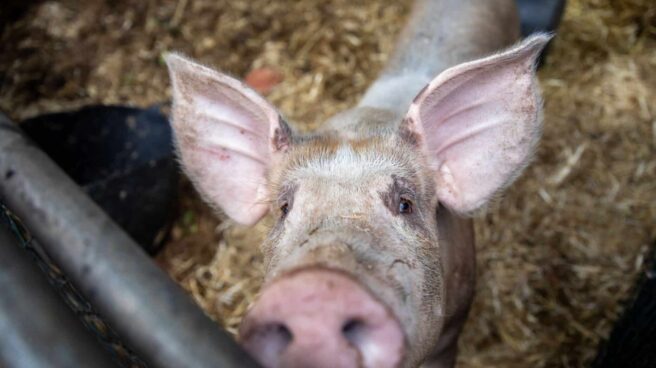

A pig at the El Paso Temporary Farm Animal Shelter on November 6, 2021 in El Paso, La Palma.
victim pigs in Spain it has grown by 40.66% since 2012. From 41.59 million pigs ten years ago, it has increased to 58.50 million in 2021. is growing and Spain is already the third largest producer of this type of meat after China D USA.
This is stated in the Annual Report of the Interprofessional organization of white pigs (Interporc), the data are compiled on the basis of official information from Ministry of Agriculture, Fisheries and Food. In terms of total pork production, 5.19 million tonnes (4.8 million tonnes of white layers) was reached in 2021, up 3.8% compared to 2020 and 49.57% compared to 2012.
Similarly, Spain produced about 967,000 tons of processed pork in 2021. Of these, 58% in the form of dried meat and the remaining 42% in the form of boiled and canned products.
What keeps growing are exports, which are up 119.15% since 2012. Overall, it rose from 1.41 million tons in 2012 to 3.09 million last year. The latter represent 60% of all production.
In terms of value, they exceeded 7,718 million euros, which is the second highest figure in the entire agri-food sector. And 133% more than in 2012. Imports, on the other hand, are very small, so positive trade balance is 7,212 million, one of the largest of all sectors.
40.4% of exported products went to China, with a volume of 1.21 million tons in the amount of more than 2,701 million euros. The rest went mainly to France, Italy, Philippines, Japan, South Korea D Portugal. These seven overseas markets already represent 75% of all exports in the sector, which ships meat to 130 markets.
Six autonomous communities they concentrate, yes, 95% of exports. Catalonia (52.4%), Aragon (22.6%), Castile-La Mancha (5.4%), Region of Murcia (5.3%), Castile and León (5%) and Andalusia (4.5%) %).
On the other hand, consumption again marks the downward trend that was observed in the last decade and was interrupted in the first year of the pandemic. In 2021, Spanish households consumed over 990,000 tons of meat and processed pork. Of these, 451,000 were from fresh meat and 539,000 as processed meat. Compared to ten years ago, we consume 8.3% less fresh pork and 5.97% less processed meat.
In any case, if you add consumption outside the home to the channels hostel and industry, in total it is assumed that consumption reaches 1.22 million tons. In addition, the Spaniards consume 9.77 kg per inhabitant per year of fresh pork, while the amount of processed meat increases to 11.68 kg. In sum, the combined consumption of both species gives a balance of 45.40 kg per person per year.

From my side, pig census Spanish is already the largest of all European Union. In contrast, the average size of Spanish farms in 2021 is around 407 pigs per farm (448.6 in the case of the white coat). According to an Interporc report, this is less than in the rest of the countries around us, where “in all of them the reported average size is well over 1,500 heads per farm.”
In addition, the number of pig farms has declined by just over 5% over the past decade, from 89,192 in 2012 to 84,674. The number of people employed in intensive farming has fallen from 71,700 to 68,836. In this sense, it is emphasized that in Spain only 2180 powerful pig farmswith 481 to 864 cattle units (UGM) in their enclosures.
Rural implementation
Employers highlight the importance of the pig sector for rural environment. Among other data, they certify that 39% of rural municipalities have farms of this type and that 75% of the pig population is located in rural areas. Likewise, 45% of industries in this sector are in this environment and provide 35% of employment in this sector.
“This is a sector that is deeply rooted in cities. We are rooted in the land that we inherited from our parents and we want to pass it on to our children,” defended Interporc President Manuel Garcia during his speech at VII Pig Forum held in Madrid.
After controversy over macro farms opened by Consumption Minister Alberto Garzon, the interprofessional wanted to focus on the importance of communication. It was during the shutdown that Planas stood up for a sector that was required to reduce emissions and increase sustainable production.
“Communication is key because the consumer falls in love and is convinced when it is explained to him that the product he consumes is absolutely safe and produced in good conditions,” he said.
Source: El Independiente